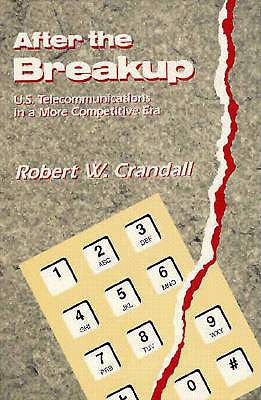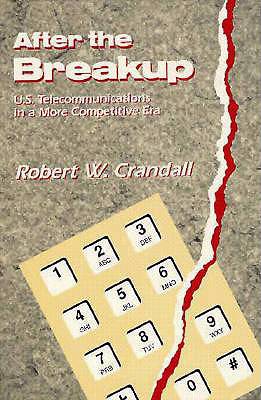
- Retrait gratuit dans votre magasin Club
- 7.000.000 titres dans notre catalogue
- Payer en toute sécurité
- Toujours un magasin près de chez vous
- Retrait gratuit dans votre magasin Club
- 7.000.0000 titres dans notre catalogue
- Payer en toute sécurité
- Toujours un magasin près de chez vous
After the Breakup
U.S. Telecommunications in a More Competitive Era
Robert W CrandallDescription
The U.S. telecommunications industry has undergone dramatic changes in recent years that have touched almost every American home and business. The average American can dial almost anywhere in the world directly, store and forward a message, or transmit a fax in less than a minute; often for less than the real cost of a 500-mile telephone call tweny-five years ago. The combination of telecommunications breakthroughs, competition among new and old carriers, and the AT&T breakup has transformed the telephone industry and provided customers with a new array of equipment and services.
Robert W. Crandall examines the effects of the AT&T breakup and weighs the costs and benefits to the residential and business consumer. On balance, he finds that the efficiency gains from opening up the telephone industry have more than offset the possible efficiency losses, which may be caused by the sacrifice of economies of scale and scope or the absence of fully compatible equipment and services. The replacement of regulation with competition has led to greater productivity in the telephone industry, a more efficient rate structure, and lower equipment prices.
Crandall traces the telecommunications evolution from its early beginnings as pairs of copper wires up through the historic 1982 decision to divest. He investigates the impact of technological changes, competition, and the advent of divestiture on the quality of service, local and interexchange service rates, productive efficiency, and income distribution. He also focuses on problems that linger after the breakup in the increasingly competitive but highly regulated sector.
"Spécifications
Parties prenantes
- Auteur(s) :
- Editeur:
Contenu
- Nombre de pages :
- 190
- Langue:
- Anglais
Caractéristiques
- EAN:
- 9780815716051
- Date de parution :
- 01-01-91
- Format:
- Livre broché
- Format numérique:
- Trade paperback (VS)
- Dimensions :
- 153 mm x 231 mm
- Poids :
- 272 g

Les avis
Nous publions uniquement les avis qui respectent les conditions requises. Consultez nos conditions pour les avis.






